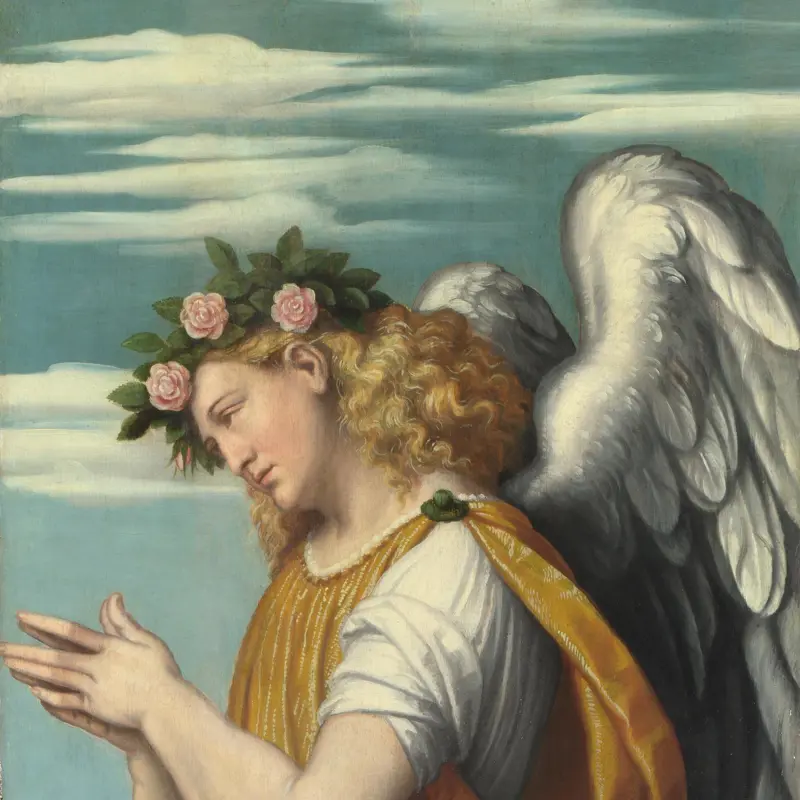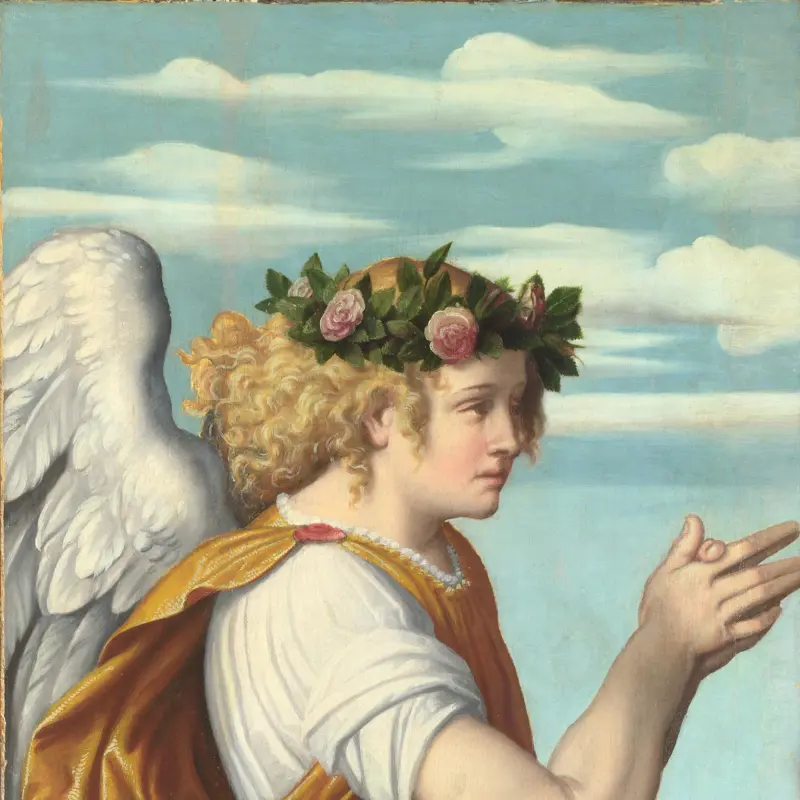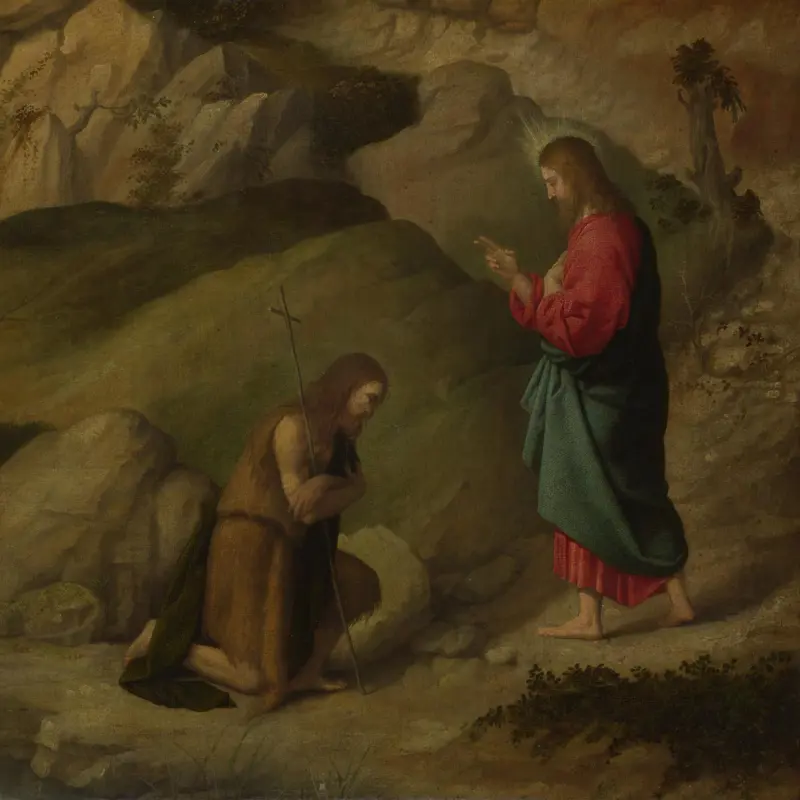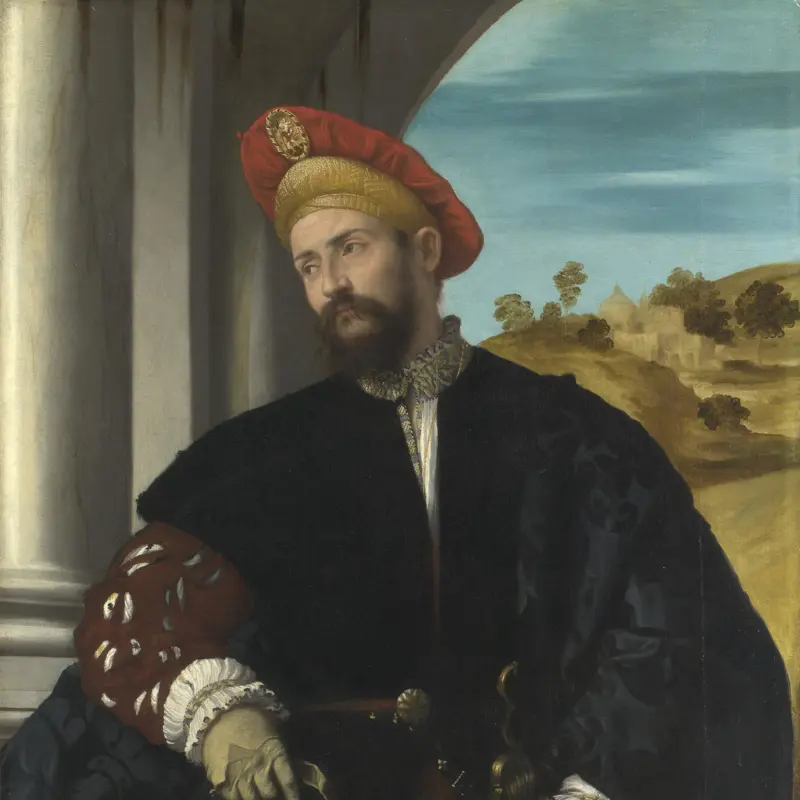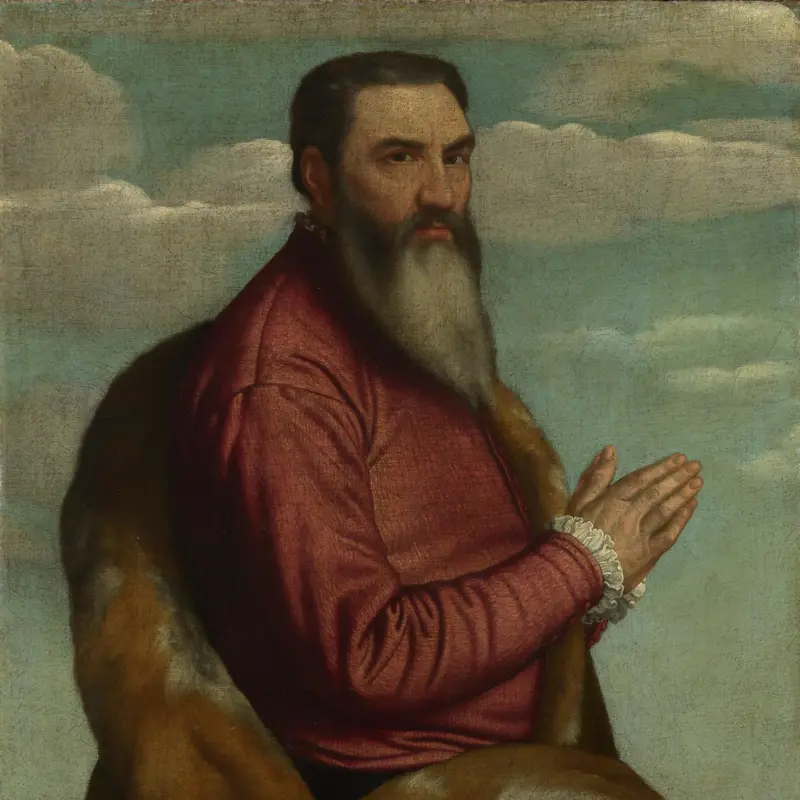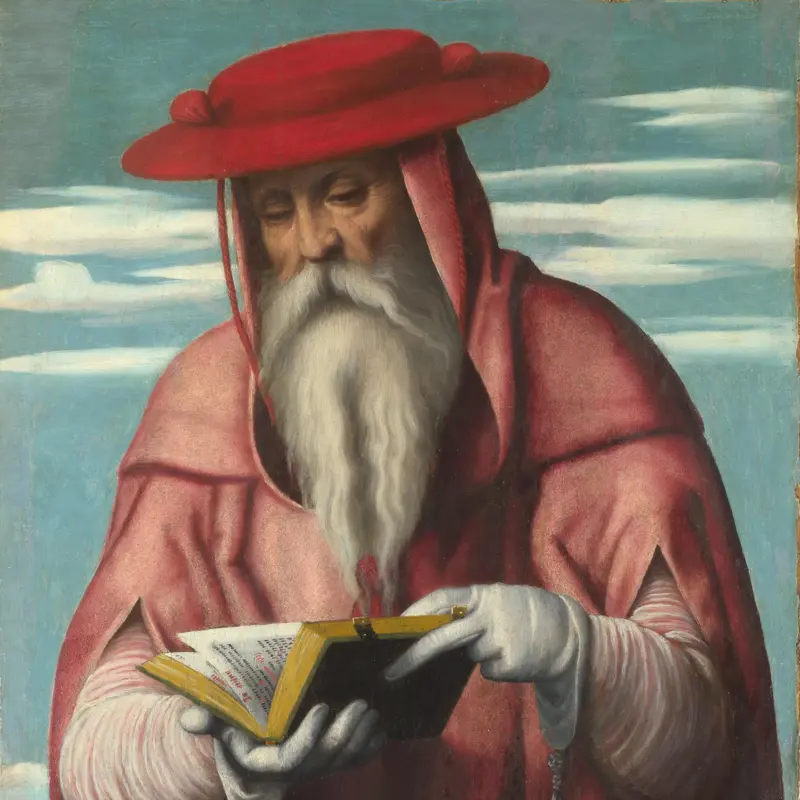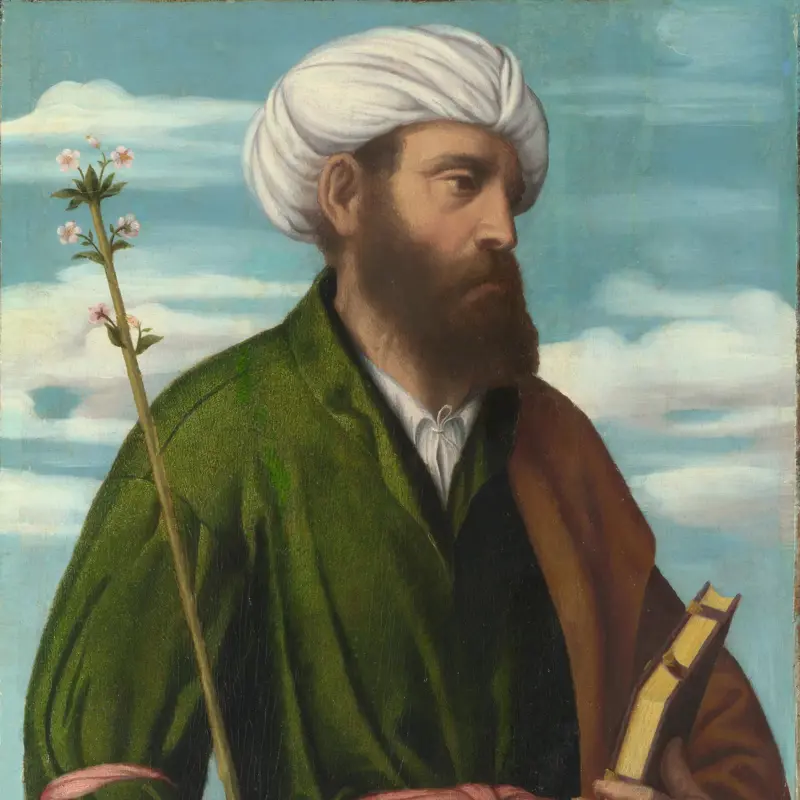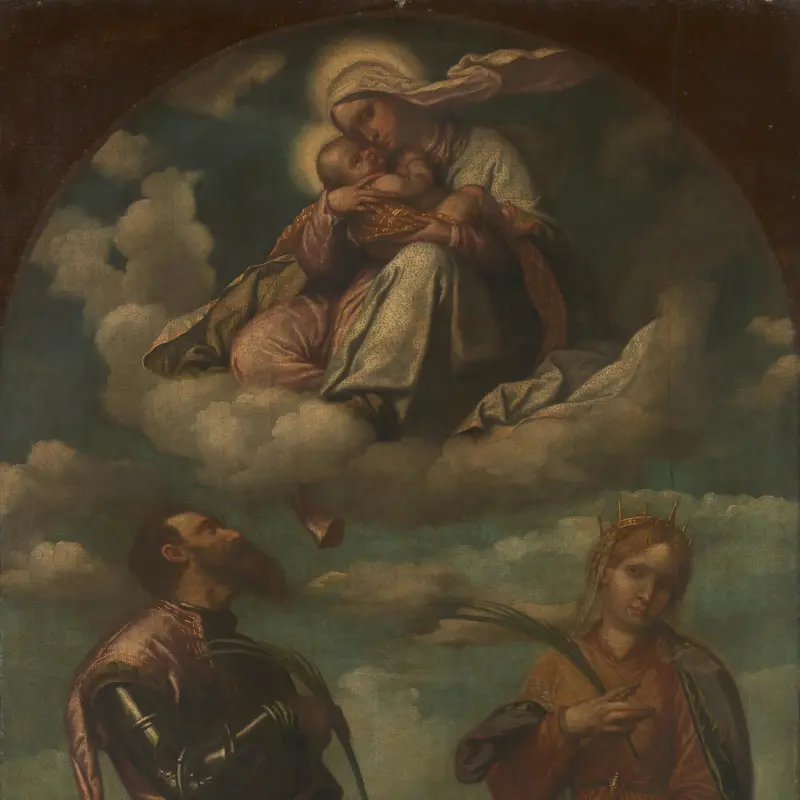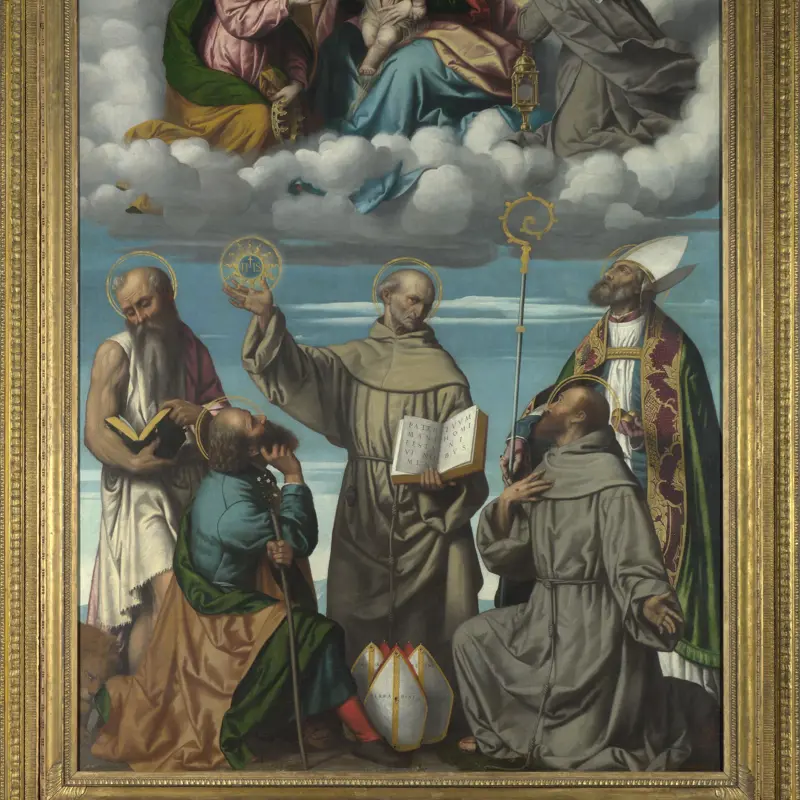Moretto da Brescia, 'Portrait of Count Fortunato Martinengo', about 1540-5
About the work
Overview
This lavishly dressed sitter, wearing a coat lined with lynx or snow leopard fur, is the Brescian nobleman and humanist Fortunato Martinengo (1512–1552). Ancient gold and silver coins and a bronze oil lamp in the shape of a foot on the table allude to his scholarly interests, and perhaps also to a pilgrimage to Jersualem that he planned to make. His pose, with his head resting on his hand, is associated with melancholy. The inscription in Greek on his cap means: ‘Alas, I yearn too much.’ It is unclear whether he longs for knowledge, for a person, or for the pilgrimage.
The portrait can be dated by the clothing to around 1540–5, when the sitter was around 30 years old. It may have been commissioned by Fortunato or his brothers as a memento before he undertook the dangerous journey to the Holy Land in 1541. In 1542 he married Livia, daughter of Count Nicolo d'Arco.
Key facts
Details
- Full title
- Portrait of Count Fortunato Martinengo
- Artist
- Moretto da Brescia
- Artist dates
- About 1498 - 1554
- Date made
- About 1540-5
- Medium and support
- Oil on canvas
- Dimensions
- 114 × 94.4 cm
- Acquisition credit
- Bought, 1858
- Inventory number
- NG299
- Location
- Room 4
- Collection
- Main Collection
- Frame
- 16th-century Italian Frame
Provenance
Additional information
Text extracted from the ‘Provenance’ section of the catalogue entry in Nicholas Penny, ‘National Gallery Catalogues: The Sixteenth Century Italian Paintings’, vol. 1, ‘Paintings from Bergamo, Brescia and Cremona’, London 2004; for further information, see the full catalogue entry.
Exhibition history
-
2008Renaissance Faces: Van Eyck to TitianThe National Gallery (London)15 October 2008 - 18 January 2009
-
2017Renaissance Venice: The Triumph of Beauty and the Destruction of PaintingMuseo Nacional Thyssen-Bornemisza20 June 2017 - 24 September 2017
-
2024Il Rinascimento a Brescia. Moretto, Romanino, Savoldo 1512-1552Santa Giulia - Museo della Città18 October 2024 - 16 February 2025
Bibliography
-
1962Gould, Cecil, National Gallery Catalogues: The Sixteenth Century Italian Schools (excluding the Venetian), London 1962
-
1987Gould, Cecil, National Gallery Catalogues: The Sixteenth Century Italian Schools, London 1987
-
2001
C. Baker and T. Henry, The National Gallery: Complete Illustrated Catalogue, London 2001
-
2004
Penny, Nicholas, National Gallery Catalogues: The Sixteenth Century Italian Paintings, 1, Paintings from Bergamo, Brescia and Cremona, London 2004
About this record
If you know more about this work or have spotted an error, please contact us. Please note that exhibition histories are listed from 2009 onwards. Bibliographies may not be complete; more comprehensive information is available in the National Gallery Library.

